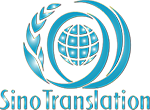Editor
Checks the translation phrase by phrase, verifies each term and meaning communication. Usually, the editor works in the track changes mode so that the project manager and translator could see how many and what kind of corrections were implemented. For the project manager, it’s an indication of the translator’s work. Based on it, he decides whether to engage this translator next time. For the translator, it’s helpful to improve his/her qualification.
The editor can notice what the translator missed or misunderstood in part of terminology and meaning communication.
However, focusing on the terminology and accurate translation, the editor can miss style or other linguistic mistakes. That's where the proofreader steps in.










